We may not have the course you’re looking for. If you enquire or give us a call on 01344203999 and speak to our training experts, we may still be able to help with your training requirements.
Training Outcomes Within Your Budget!
We ensure quality, budget-alignment, and timely delivery by our expert instructors.

Change Management Books are essential for CEOs, managers, entrepreneurs, and other business leaders to sail through organisational transformations and guide their employees through workplace changes. These books cover a wide range of topics, including Organisational Psychology, Agile Methodology, and effective leadership practices. These books help provide the necessary tools to impart growth and adaptability within their organisations. Want to know how?
Read this blog to explore the top 13 Change Management Books to read. These books have the potential to ignite the visionary businessperson in you. These books can help you understand and manage the ever-growing trends in the workplace. Happy learning!
Table of Contents
1) 13 Best Books for Change Management
a) The Theory and Practice of Chain Management
b) Managing Transitions: Making the Most of Change
c) Switch: How to Change Things When Change is Hard
d) Who Moved My Cheese?
e) The Innovator’s Dilemma: When New Technologies Cause Great Firms to Fail
f) Our Iceberg is Melting
g) Doing Agile Right: Transformation Without Chaos
h) Imagine IT Forward
i) Communicating Change
j) You’re It: Crisis, Change, and How to Lead When It Matters Most
2) Conclusion
13 Best Books for Change Management
The compilation of the 13 best Change Management Books offers valuable insights on how to effectively approach organisational change. These books draw from the works of several scholars around the globe who share their opinions and theories to assist in bringing changes within an organisation. This helps in achieving breakthrough results. Let's have detailed look at each one of them:
Explore our Change Management Training and learn how to implement a change at your workplace.
The Theory and Practice of Change Management

"The Theory and Practice of Change Management" by John Hayes is the perfect choice for managers and MBA students exploring the world of Change Management. In today's business sphere, where technological advancements, globalisation, and global events transform continuously, effective Change Management is crucial for a company's survival.
John Hayes, the author, demonstrates his expertise by defining terms, presenting comprehensive research, and organising chapters with case studies, diagrams, and summaries. This book equips managers to handle change arising from unpredictable events, tackle it, and effectively communicate its benefits to stakeholders. Moreover, it offers practical tools and academic insights to ensure ongoing success in managing organisational change. With its hands-on approach, this bestseller guides readers in effectively implementing changes within their organisations.
Managing Transitions: Making the Most of Change
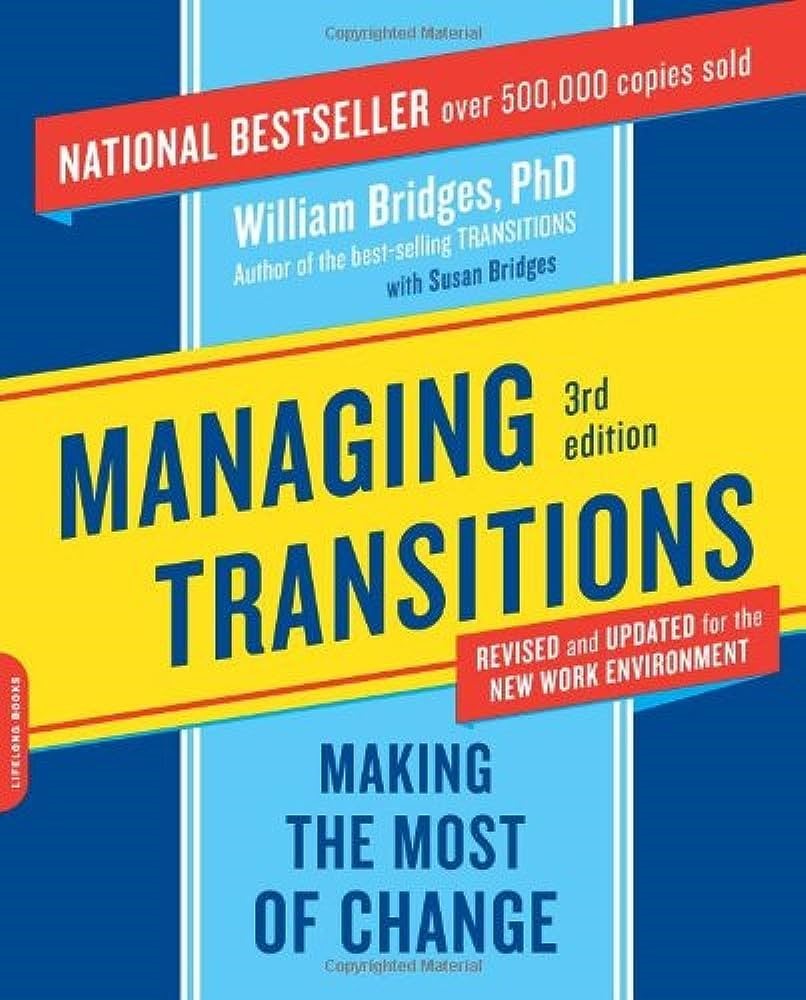
This is one of the most compact and clearly written Change Management books you will ever come across. Author William Bridges conveys his thoughts with precision and delivers the content without any redundant jargon. He also includes an array of refreshing quotations about change and innovation, from diverse writers and thinkers not usually featured in business books.
The author adds intelligence and sensitivity to the topic often saturated with clichés by providing relevant examples of recent business transformations. This distinctive approach holds value for seasoned business book readers, who can truly grasp its essence. For others, the book offers a seamless read, avoiding any confusion about the author's intended message.
Regiter for Managing Organisational Change Effectively course and improve your Change Management skills.
Switch: How to Change Things When Change is Hard

In their book, "Switch," authors Chip Heath and Dan Heath propose that the primary barrier to changing our lives is the internal conflict between our rational and emotional minds. Using a metaphor of an elephant (representing the emotional mind) and its rider (representing the rational mind), they highlight the importance of these two aspects working simultaneously. The rider provides direction and planning, while the elephant contributes motivation and energy. To achieve meaningful change, both elements must collaborate effectively.
The authors delve into this dilemma, offering profound psychological insights and sharing personal stories of individuals who successfully integrated both aspects of their minds, leading to remarkable outcomes. "Switch" reveals a fundamental pattern observed in real-world successful changes and then guides readers on how they can apply this pattern to bring about successful transformations in their personal and professional lives.
Who Moved My Cheese?
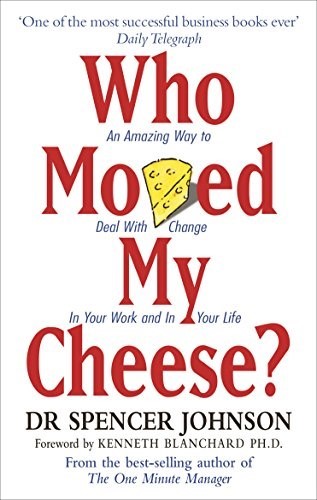
Who Moved My Cheese by Spencer Johnson is regarded as one of the classic Change Management Books ever written. Praised highly by industry leaders, this book stands out as an exceptional resource for management professionals and employees seeking effective Change Management strategies. Using the allegory of mice navigating a maze, the authors emphasise the significance of attitude over mere action. They contend that workplace transformation is an ever-evolving process, and to make it smooth, it is essential to focus on the mindset of team members.
While change can trigger fear and anger among employees, the book encourages leaders to steer their teams away from panic and develop a productive mindset to fine tune change gracefully. The authors emphasise the importance of introspection, urging both leaders and employees to examine their current attitudes and perspectives. It acknowledges and humorously reflects on their shortcomings, thereby making individuals strive for continuous improvement.
The Innovator’s Dilemma: When New Technologies Cause Great Firms to Fail
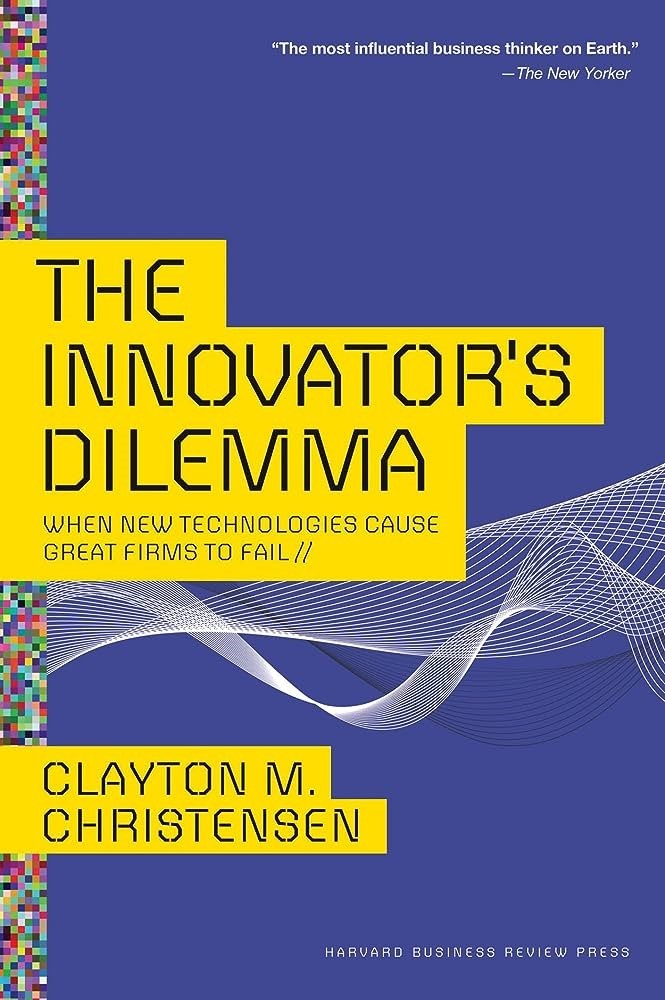
Clayton Christensen's acclaimed work, "The Innovator's Dilemma," stands as a foundation in the domain of Change Management literature. In this book, Christensen discusses the profound impact of revolutionary technologies on existing markets and recommends a welcoming stance for advancements during opportune moments. The central message revolves around the idea that even prosperous, well-established industry leaders risk losing their competitive edge if they resist change.
The book serves as a guide for leaders, passing on valuable insights into assessing new technologies and abandoning conventional practices in favour of progress. By providing readers with the tools to steer transformations, "The Innovator's Dilemma" stands as an essential handbook for those seeking to drive and sustain change in their respective industries.
Looking to develop your knowledge of risk and Chain Management Methodology? Join our Risk Management for Change Training course now!
Our Iceberg is Melting
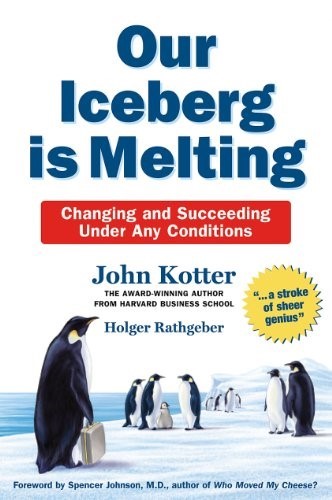
The author, John Kotter, is a Harvard professor and thought leader in Change Management. Our Iceberg is Melting presents a simplified approach to the complex process of organisational transformation through an engaging tale about a colony of penguins residing on an iceberg. The story follows an observant penguin scout who notices a problem with their iceberg home but faces resistance and mockery when he tries to raise awareness. To save his colony, he must convince the penguin leaders, experts, and even young penguins to recognise the urgency for change.
The book offers an enjoyable portrayal of various personality types commonly encountered in the business world and provides a means to effectively communicate with those who are resistant to necessary changes. It lays out eight practical and straightforward steps that individuals at any level can adopt while being on the challenging journey of organisational transformation.
Doing Agile Right: Transformation Without Chaos
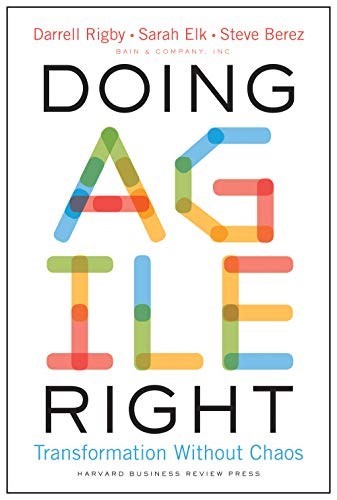
"Doing Agile Right" is a book tailored for progressive leaders seeking to transform and strengthen their companies. The book addresses the challenge faced by many companies today - the struggle to innovate while being weighed down by bureaucratic systems of the past. It emphasises the importance of reorganising and reimagining a company to achieve optimal efficiency and success in the business landscape.
The book also highlights the possibility of finding a seamless balance between agile approaches and traditional systems. By bridging the gap between bureaucracy and innovation, both can complement each other to deliver more results. "Doing Agile Right" dives into vital topics like budgeting, scaling, technology, and people management, offering valuable insights for organisations aiming to stay relevant and grow in today's rapidly evolving business environment.
Improve your understanding of Change Management by signing up for our Change Management Foundation course now!
Imagine IT Forward
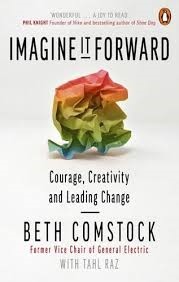
Looking at the organisational transformation process through a creative and imaginative lens, "Imagine It Forward" encourages readers to proactively drive change before it becomes necessary due to crises or trends. Written by Beth Comstock, the book emphasises the power of storytelling and risk-taking to bring about transformation at the organisational level.
The author leverages her own experiences and illustrates that change should be approached as a creative and artful endeavour, requiring both imagination and discipline. Unlike traditional business strategies that lack a compelling narrative about the world and its employees, this approach urges leaders to create an interesting story around their vision and plans. The goal is to make people not only understand the vision but also to see themselves as integral characters in that story, inspiring them to act and bring the new plan to life. In short, the book challenges the conventional notions of change and offers a more imaginative and engaging approach to drive meaningful organisational transformation.
Communicating Change

"Communicating Change" is a well-known guide that provides valuable insights on effectively discussing the changes your project aims to implement. The focus is primarily on mastering the art of communication, whether it's in written form or delivered in person. This aspect is considered the most challenging but crucial part of the process.
According to the authors T.J. Larkin and Sandar Larkin, a widespread belief among CEOs of major corporations is that their direct words will motivate front-line employees. However, the writers argue that five decades of research indicate the opposite. They assert that effective communication of change should be done through low-level supervisors who hold greater credibility with front-line workers. To support their claims, the authors present numerous real-life instances as well. This book is a clearly constructed argument to CEOs and to anyone charged with communicating with large numbers of employees.
Learn the fundamentals of Chain Management wit our Change Management Foundation & Practitioner course.
You’re It: Crisis, Change, and How to Lead When It Matters Most

The world has seen numerous pressing challenges, such as economic crisis, natural calamities, and a global pandemic. These unforeseeable circumstances can serve as a catalyst for innovation and outstanding performance. Leaders adeptly guide their organisations through periods of rapid and unpredictable change by employing methods outlined in the book "You're It: Leading Through Crises” written by Leonard J. Marcus, Eric J. McNulty, Joseph M. Henderson and Barry C. Dorn.
The book teaches readers how to maintain a composed and clear mindset when assessing challenging situations, make pragmatic decisions, instil confidence in colleagues, and adapt their businesses without overwhelming their workforce. These leadership strategies are vital for effectively tackling crises and fostering resilience in times of uncertainty. The authors’ insights include dealing with stress and reaching a nuanced understanding of complex systems.
Leadershift (The 11 Essential Changes Every Leader Must Embrace)
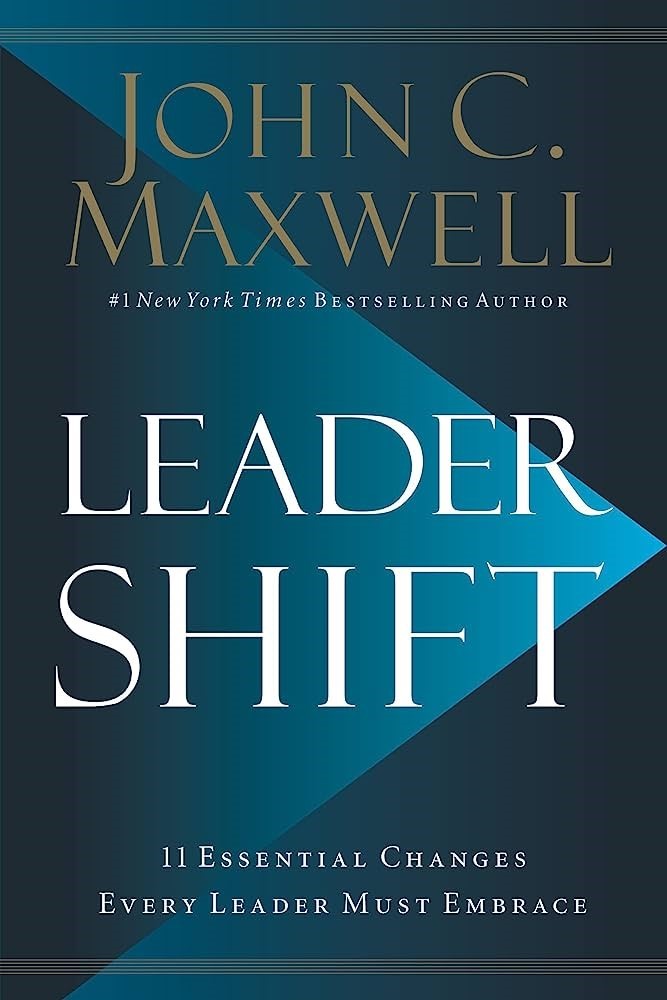
The author, John Maxwell, in his renowned book "Leadershift," takes us into the essential changes that leaders must embrace to drive noteworthy growth and bring about meaningful change in their careers. He highlights 11 critical shifts that leaders need to make. These transformations include moving from seeking approval and pleasing people to daring to challenge them. Maxwell effectively defines and illustrates each of these approaches, equipping organisational leaders with the tools to garner employee support and lead vital transformations within their organisations.
John Maxwell also provides valuable insights in his book on how leaders can adapt and make necessary shifts, referred to as "leadershifts," to effectively respond to future challenges. The book is beneficial for experienced leaders, offering them direction and boosting the confidence of overwhelmed junior executives. Moreover, potential leaders are encouraged to embrace their courage and step into leadership roles.
Learn how to manage a project using Agile methodology with our Managing Change With Agile Methodology Training course
Change (the) Management: Why We as Leaders Must Change for the Change to Last by Al Comeaux

In this book, Al Comeaux talks about the reasons for organisational changes and the reasons behind the initiatives that are taken for change. The book explains that organisations and the management alike must set rational goals which can help making the changes easier and faster. Here, the author asks the management and the organisation to reach out on the emotional level of the employees rather meeting them on the surface. It helps the employees feel heard, when they are going through these changes.
There are several stories in this book which help demonstrate the need for new and innovative way of thinking,necessary in an organisation. In this book the author also urges the leaders of the organisation to change the way they think for the better. The author explains how to lead teams successfully every day while implementing the changes. The author brings in his experiences as a senior executive in well-known companies . With his decades of experience and research, he helps the readers understand the power of organisational change.
HBR’s 10 Must Reads on Change Management by the Harvard Business Review
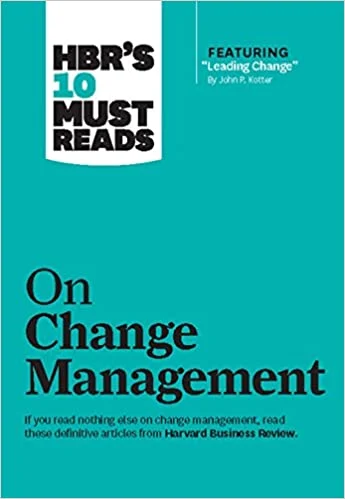
This is a series of Change Management essays that have been written meticulously and made into a collection, by the Harvard Business Review. These essays helps the readers understand the importance of Change Management, the need for Change Management, the important eight steps to lead the change, and more. This collection is aims at minimising the discomfort that employees and stakeholders go through because of the changes in the organisation.
This book also helps the readers understand that even though Change Management fails a maximum number of times, organisations can succeed by changing the process. Instead of following one long and lengthy path for the process, it can be broken up into several steps, where there are short-term goals must be involved, along with long-term goals. Moreover, the book describes that bringing change in organisation, is more than an event. There must be a sense of urgency that needs to be created which will help the employees understand the importance of this change and the necessity of their active participation.
Conclusion
Change is the only constant, and leaders need to be able to handle it well. We hope that the Change Management Books provided in the blog have helped you learn how to deal with change by making good decisions and being flexible. By fostering work environments that encourage innovation and adaptability, these books empower individuals and teams to embrace
Ready to kickstart your journey in Change Management? Join our Certified Professional Change Management (CPCM) Course now!
Frequently Asked Questions
Upcoming Project Management Resources Batches & Dates
Date
 Change Management Foundation & Practitioner
Change Management Foundation & Practitioner
Mon 20th May 2024
Mon 3rd Jun 2024
Sat 8th Jun 2024, Sun 9th Jun 2024
Mon 17th Jun 2024
Mon 1st Jul 2024
Sat 6th Jul 2024, Sun 7th Jul 2024
Mon 15th Jul 2024
Mon 29th Jul 2024
Mon 12th Aug 2024
Sat 17th Aug 2024, Sun 18th Aug 2024
Tue 27th Aug 2024
Mon 9th Sep 2024
Sat 14th Sep 2024, Sun 15th Sep 2024
Mon 23rd Sep 2024
Mon 7th Oct 2024
Sat 12th Oct 2024, Sun 13th Oct 2024
Mon 21st Oct 2024
Mon 28th Oct 2024
Mon 4th Nov 2024
Sat 9th Nov 2024, Sun 10th Nov 2024
Mon 11th Nov 2024
Mon 18th Nov 2024
Mon 25th Nov 2024
Mon 2nd Dec 2024
Sat 7th Dec 2024, Sun 8th Dec 2024
Mon 9th Dec 2024
Mon 16th Dec 2024
Mon 6th Jan 2025
Mon 13th Jan 2025
Mon 20th Jan 2025
Mon 27th Jan 2025
Mon 3rd Feb 2025
Mon 10th Feb 2025
Mon 17th Feb 2025
Mon 24th Feb 2025
Mon 3rd Mar 2025
Mon 10th Mar 2025
Mon 17th Mar 2025
Mon 24th Mar 2025
Mon 31st Mar 2025
Mon 7th Apr 2025
Mon 28th Apr 2025
Mon 12th May 2025
Mon 19th May 2025
Mon 9th Jun 2025
Mon 23rd Jun 2025
Mon 7th Jul 2025
Mon 21st Jul 2025
Mon 4th Aug 2025
Mon 18th Aug 2025
Mon 1st Sep 2025
Mon 15th Sep 2025
Mon 29th Sep 2025
Mon 13th Oct 2025
Mon 20th Oct 2025
Mon 27th Oct 2025
Mon 3rd Nov 2025
Mon 10th Nov 2025
Mon 17th Nov 2025
Mon 24th Nov 2025
Mon 1st Dec 2025
Mon 8th Dec 2025
Mon 15th Dec 2025







 Top Rated Course
Top Rated Course



 If you wish to make any changes to your course, please
If you wish to make any changes to your course, please


